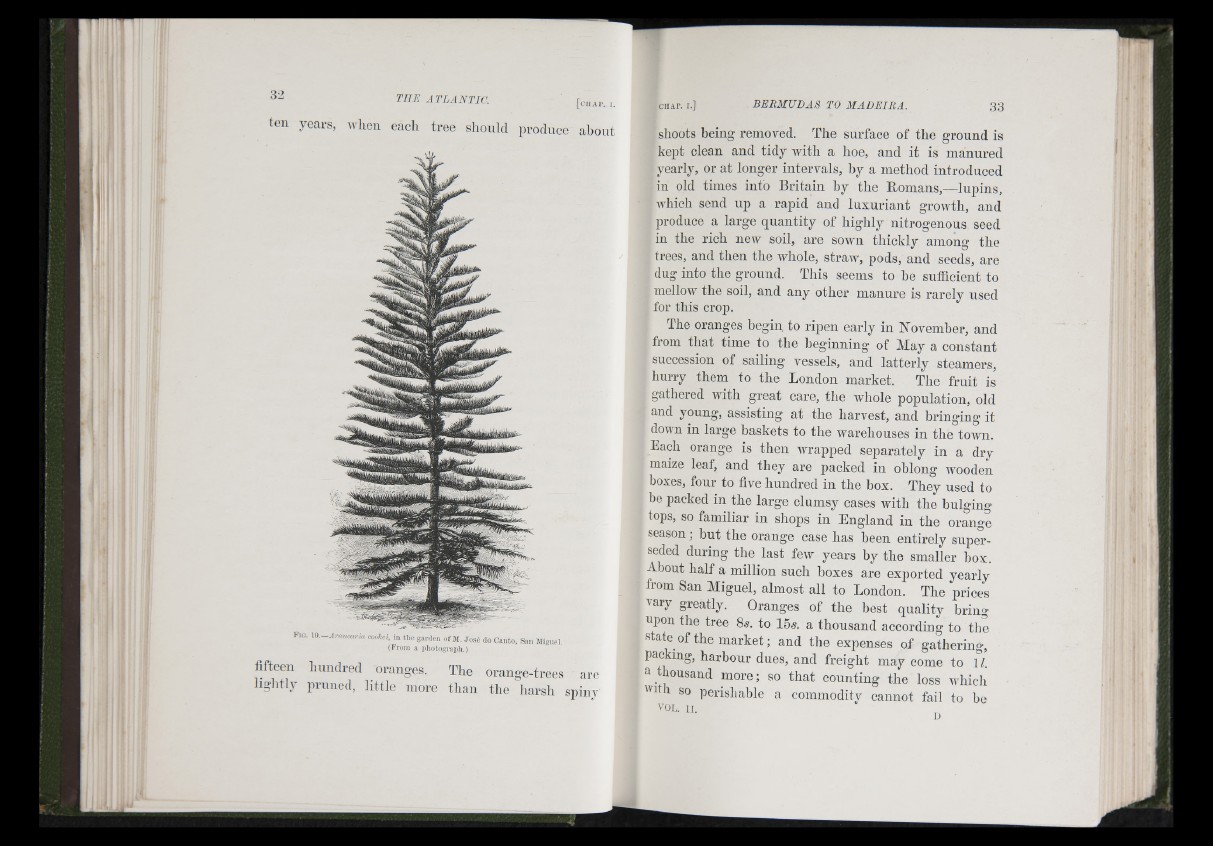
T H E A T L A N T IC . feuAr. i.
ten years, when each tree should produce ahoiit
Fig. \0 .-A m v ,m r ia cool.-ei, in th e garden of M José do Canto, San Miguel
(From a photograph.)
fifteen hundred oranges. The orange-trees are
hglitly pruned, little more th an the harsh spiny
shoots being removed. The surface of the ground is
kept clean and tidy with a hoe, and it is manured
yearly, or at longer intervals, by a method introduced
in old times into Britain by the Romans,—lupins,
Avliich send up a rapid and luxuriant growth, and
produce a large quantity of highly nitrogenous seed
in the rich new soil, are soAvn thickly among the
trees, and then the Avhole, stra\Aq pods, and seeds, are
dug into the ground. This seems to be sufficient to
mellow the soil, and any other manure is rarely used
for this crop.
The oranges begin, to ripen early in November, and
from that time to the beginning of May a constant
succession of sailing vessels, and latterly steamers,
hurry them to the London market. The fruit is
gathered Avith great care, the whole population, old
and young, assisting at the harvest, and bringing it
down in large baskets to the warehouses in the toAvn.
Each orange is then Avrapped separately in a dry
maize leaf, and they are packed in oblong AAmoden
boxes, four to five hundred in the box. They used to
be packed in the large clumsy cases with the bulging
tops, so familiar in shops in England in the orange
season; but the orange case has been entirely superseded
during the last fcAv years by the smaller box.
About half a million such boxes are exported yearly
from San Miguel, almost all to London. The prices
vary greatly. Oranges of the best quality bring
upon the tree 8s. to 15s. a thousand according to the
s ate of the market; and the expenses of gathering,
packing, harbour dues, and freight may come to 11.
a thousand more; so that counting the loss which
so perishable a commodity cannot fail to he
VOL. 1[.